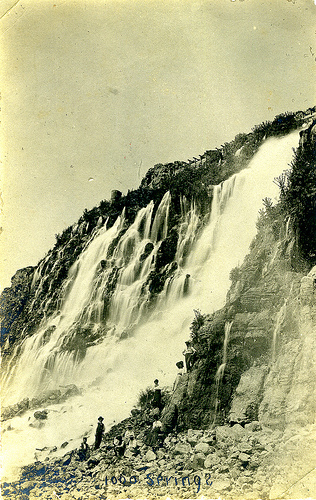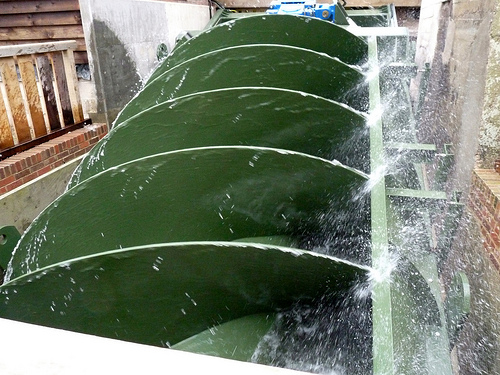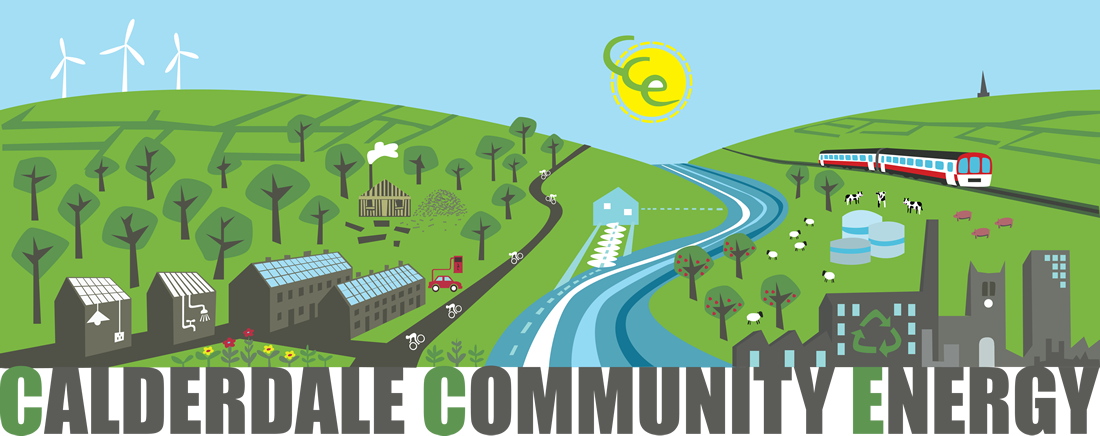
Image via Flickr http://www.flickr.com/photos/23487245@N08/5502566759
What is hydro-electric power?
It is electricity generated when we extract energy from falling water. Its use can be traced back to ancient times. Nowadays the power of water is used to generate electricity.
Currently, hydroelectric power accounts for around 2% of the UK’s total installed electricity generating capacity, but this is mostly from large scale systems, which are not likely to be built in the future
How is energy extracted from the falling water?
Electricity is produced when a flow of water, either from a reservoir or river, is channelled through a turbine connected to an electricity generator. The amount of power produced depends on the rate of flow and the volume of water available.
Hydroelectric schemes can be divided into two broad categories: large scale – more than 5 MW and small scale – less than 5 MW. Smaller systems of a few tens of kilowatts are called microhydro. These are not usually connected to the electricity network (which is required when selling power).

Image via Flickr https://www.flickr.com/photos/11569642@N00/6323257404
How do we make the most of the water flows we have available?
The principles of operating a small-scale and large-scale scheme are essentially the same. They both require:
- A suitable rainfall catchment area
- A good ‘head’ of water (vertical distance between the reservoir or river to the turbine) OR a good amount of water flowing through the system.
The height of the ‘head’ and amount of water flow available will determine how much power can be produced.
- A water intake placed above a weir or behind a dam, although this is not usually required for microhydro schemes.
- A pipeline or channel to transport the water from the reservoir or river to the turbine
- A turbine, a generator or grid connection and associated building
- An outflow, where the water is returned to the main water system
How long will a system last?
Hydroelectric schemes can last for decades with suitable maintenance.
What are the environmental impacts of small-scale hydro power?
Hydro-electric schemes are environmentally attractive because they do not produce pollution during operation. Small-scale schemes, which do not involve collecting water behind dams or in reservoirs, have very little impact on the environment. The principle environmental issues are:
- the visual intrusion of the turbine building but this can be hidden by bushes and plants
- the ecological impact of diverting water flow
- the effect on the fish but they can be protected by close fitting mesh screens
- the impact of the scheme’s construction phase especially when temporary dams may be necessary.
Decommissioning at the end of their useful life is simply a matter of removing the equipment.
Do I have to ask permission to install a micro hydro scheme?
Yes, before extracting water from any river or stream, a licence has to be obtained from the Environment Agency or other relevant authority. Planning permission may also be needed.
How much does it cost?
The initial capital outlay depends on the site but with the long lifetime of the equipment, high reliability and no fuel costs the running costs are very low. Initial capital costs can be substantially reduced when using pre-existing infrastructure, e.g. at a former water powered mill site.
Costs are low for schemes with high ‘head’ of water with costs increasing as the height of the water’s fall decreases.
